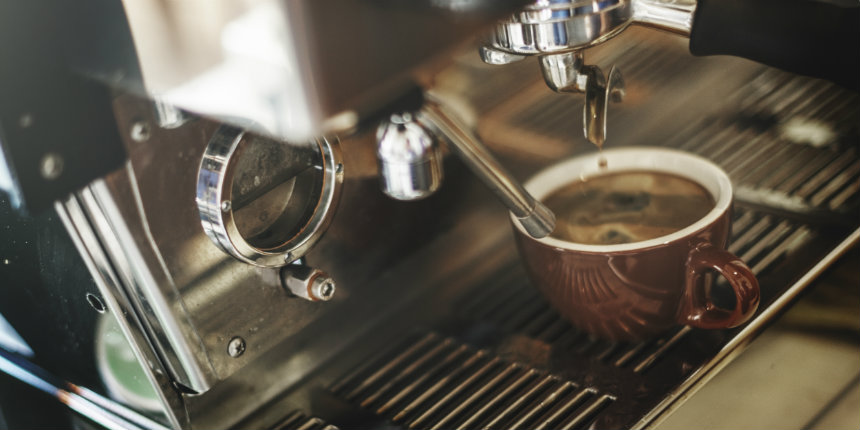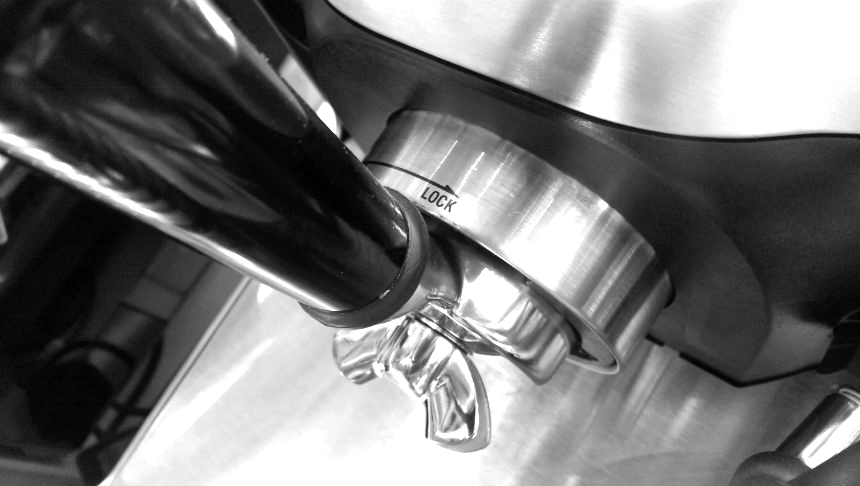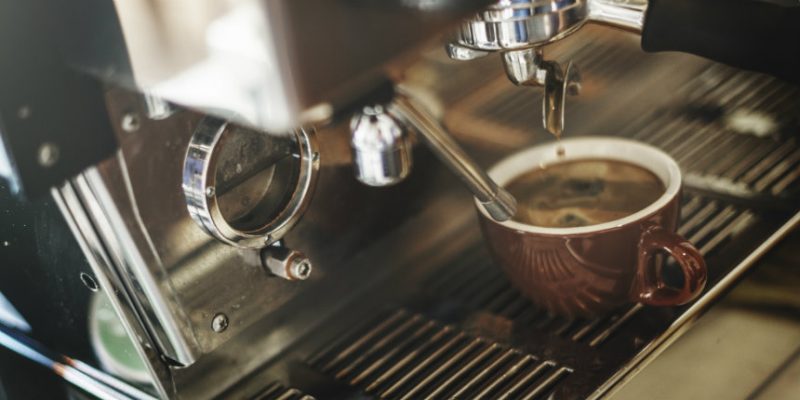
Long lines and expensive espresso can make getting your morning dose of coffee a trial. If you’re ready to cut the lines and become your very own personal barista, you may be wondering which route to go – super, semi or maybe pod machine. In this post, I want to tell you about semi-automatics. What is a semi-automatic espresso machine? Read on and decide whether or not it’s the one right for you.
The basics of a semi-automatic espresso machine
The espresso began a little more than a century ago when Europeans everywhere wanted freshly brewed coffee without a wait. Although espresso machines were originally made to produce instantaneous coffee in bulk, by the 19th century the very first single-shot espresso machines had been invented.
Over the years, many types of espresso machines have been used, and today, the semi-automatic espresso machine is the most common type on the market. These machines do the heavy lifting behind making a perfect espresso, but still, give you some flexibility to fine tune.
The pressure to make a perfect espresso
One of the most important elements of a perfect espresso is pressure, as shots of espresso are extracted by forcing hot water through the finely ground coffee. Semi-automatic espresso machines produce pressure either through steam or a pump mechanism.
Steam-powered machines are much less expensive and entry-level versions can be purchased for under a hundred dollars. However, in exchange for a low price, the pressure used to make your espresso is much lower, around 3 bars. This level of pressure is too low to produce the golden frothy crema, and the high temperature of the steam can often lead to your espresso tasting slightly burnt.
Buying a semi-automatic espresso with a pump is a larger investment, but it uses a pressure of at least 9 bars or more to extract the shot. Steam is also used in pump espresso machines but is not what exerts pressure. Instead, the machine heats water, then pumps it through the coffee, producing a shot of espresso.
Pump espresso machines produce higher quality espresso mostly because of their higher pressure. You can come across machines with 12 bars and more but usually the ideal level for perfect shot seats between 9 and 10 bars. Even when the manufacturer states that machine has a 15 bar pump, the pressure used for extracting espresso will be around 9 bars.
Putting the semi in semi-automatic
While temperature and pressure are controlled automatically in a semi-automatic espresso machine, it’s up to the user to decide when to start and stop the espresso extraction. Users are also typically in control of grinding and tamping their coffee grounds, as well as frothing their milk.
Some semi-automatic machines are more automatic than others, typically with the price rising as the machines become more nuanced. For example, entry-level semi-automatic typically has the most straightforward version of the portafilter—the compartment that holds your freshly grounded espresso. This simple portafilter, known as a pressurized portafilter, requires less skilled grinding and tamping down of your coffee. These are great if you’re planning to make mostly milky drinks, like lattes or cappuccinos.

A mid-level semi-automatic will often include both the pressurized portafilter and a more complex, non-pressurized portafilter. As the user becomes more familiar with the espresso process, they can begin to experiment with the non-pressurized portafilter, which requires more finessed grinding and tamping. In exchange for deft hands, the espresso produced with a non-pressurized portafilter will have a bolder taste, ideal for drinks like Americanos or macchiatos.
If you want to become the best barista possible and are willing to spend top dollar, a bottomless portafilter might be the way to go. Although these are the most finicky and difficult to use, they also offer the most visual cues to how well you’re grinding and tamping.
Turning up the heat
The boiler is one of the most complex parts of any espresso maker. It’s what heats your water and creates steam for frothing milk. There are three major types of boiler setups in semi-automatics.
The most inexpensive option is a semi-automatic with a single boiler used for both brewing and frothing, known as a single boiler dual use. A single boiler can’t do both at the same time, however, so these take the longest start to finish. Once the coffee is brewed, you’ll have to wait for the boiler to heat up enough to steam milk. If you want to make a second milk coffee right after, you’ll also have to wait for the boiler to cool down in order to return to the brewing temperature.
A heat exchanger boiler still only has one boiler but is able to brew and froth at the same time. This works by keeping the water in a separate system within the boiler, which is always set to a milk steaming temperature. In this way, the water gets heated by the steam to near exact brewing temperature. A barista looking to experiment can get fancy with careful manipulation of a heat exchanger system to control brew temperatures, but this is also a great choice if you want to cut down on time with no added finesse.
Another type of boiler system is the dual boiler, which as the name suggests, has two separate boilers with individual temperatures. This allows for a consistent brew and steaming temperatures and quick espresso, but also offers less flexibility for an experimental barista.
Both the heat exchange and dual boiler systems can be quite pricey, and bring semi-automatic espresso machines to $800 or more, while single boilers can typically be found anywhere in the spectrum of $300 to $600.
Keeping the temperature just right
The top of your espresso machine, where you load your portafilter and grinds, is known as the group head or brew head. Its key purpose is to maintain temperature stability. While traditionally, most semi-automatic group heads were part of the E61 group, most machines now have a more modern group, known as saturated heat group head, which is able to maintain temperature more exactly. Entry-level models may still feature the E61 group head, while it should be expected that all high-level models have saturated heat group heads for improved temperature control.
Another aspect of complexity in some higher-end semi-automatic espresso machines is the PID. Traditional espresso machines rely on thermometers and pressure gauges to control brewing aspects automatically, whereas more advanced versions use a PID controller, which essentially monitors brewing traits electronically. The big difference between a traditional gauge and a PID is that a PID allows the user to tinker with brew temperatures more extensively. PIDs are typically found on high-end machines, which price in the upper hundreds.
Steam and foam wands
Once you’ve extracted your espresso, it’s time to do any necessary steaming and frothing of milk. Entry-level and mid-range machines may have steam wands that come with a secondary frothing aid, sometimes known as a Panarello to compensate for the weaker amount of steam produced. The quality of the Panarello wands ranges depending on the price and brand of the machine, but with a little bit of practice, they can help turn latte doodles into art.
Prosumer and semi-commercial machines have more professional steaming wands that require more expertise to produce quality microfoam.
Materials
Materials can play a major factor in how long you keep your espresso machine before upgrading or replacing it. Most espresso machines will have parts made of both plastic and steel. A machine with more metal parts than plastic will improve durability over the years, but it will also increase the price substantially. In contrast, plastic materials are more likely to crack, but if you’re planning to upgrade in a year or two, it may not matter.
Best brands for your budget
There are many semi-automatic brands out there, from entry-level Gaggia machines to artisanal Breville and made to order Slayer brands.
Brands like Gaggia offer excellent introductory semi-automatic machines with single boiler systems. Gaggia Classic is around $350 but comes with both pressurized and non-pressurized portafilters to allow you to grow as a barista over time.
Brands like Rancilio and Breville offer a wide-range of semi-automatics. Some of their more inexpensive single boilers are approximately $600, while their heat exchange and double boiler systems like the Breville Dual Boiler can easily break $1,200. The brand Slayer also offers some of the highest quality semi-automatics and if you’re looking for a dual boiler single group model, it can set you off several thousand dollars.
When buying semi-automatic you also have to keep in mind to budget for a quality burr grinder. I’d even say that having a good grinder is a must if you really want to explore the beautiful world of coffee flavors.
Are you ready for a semi-automatic?
Now that you know what a semi-automatic espresso machine is and how it works, it’s time to ask yourself if you’re ready to become an at-home barista. Depending on your dedication, you may want to start with either a less expensive entry-level machine which is slightly more automated or a more expensive machine which will leave you with plenty of room to go. Either way, a personal espresso machine can prove to be a fun hobby full of finesse and flavor, and you’ll never have to wait in a long coffee line again.
If you feel there is something more that I should add please let me know by commenting in the box below 🙂
Kat

